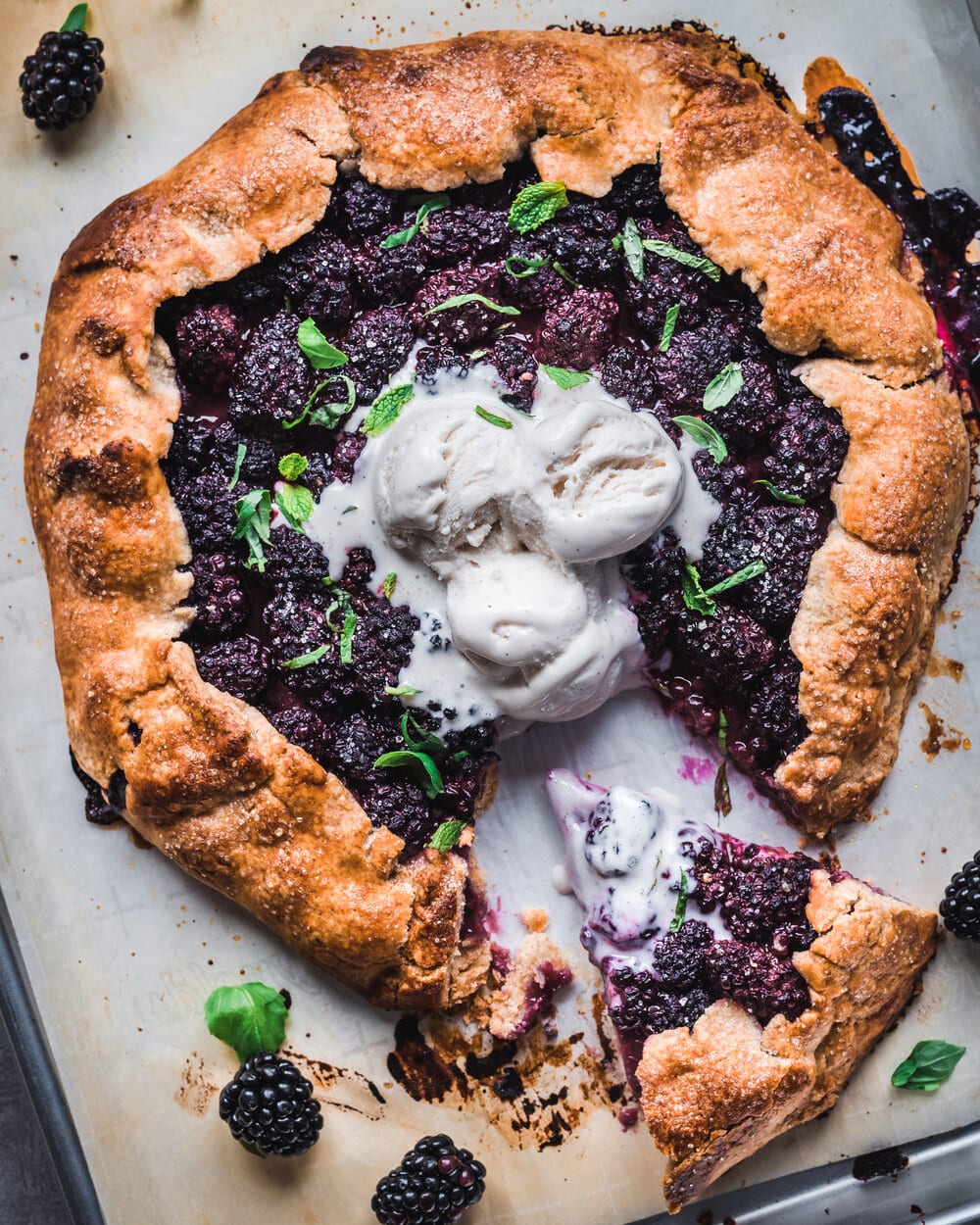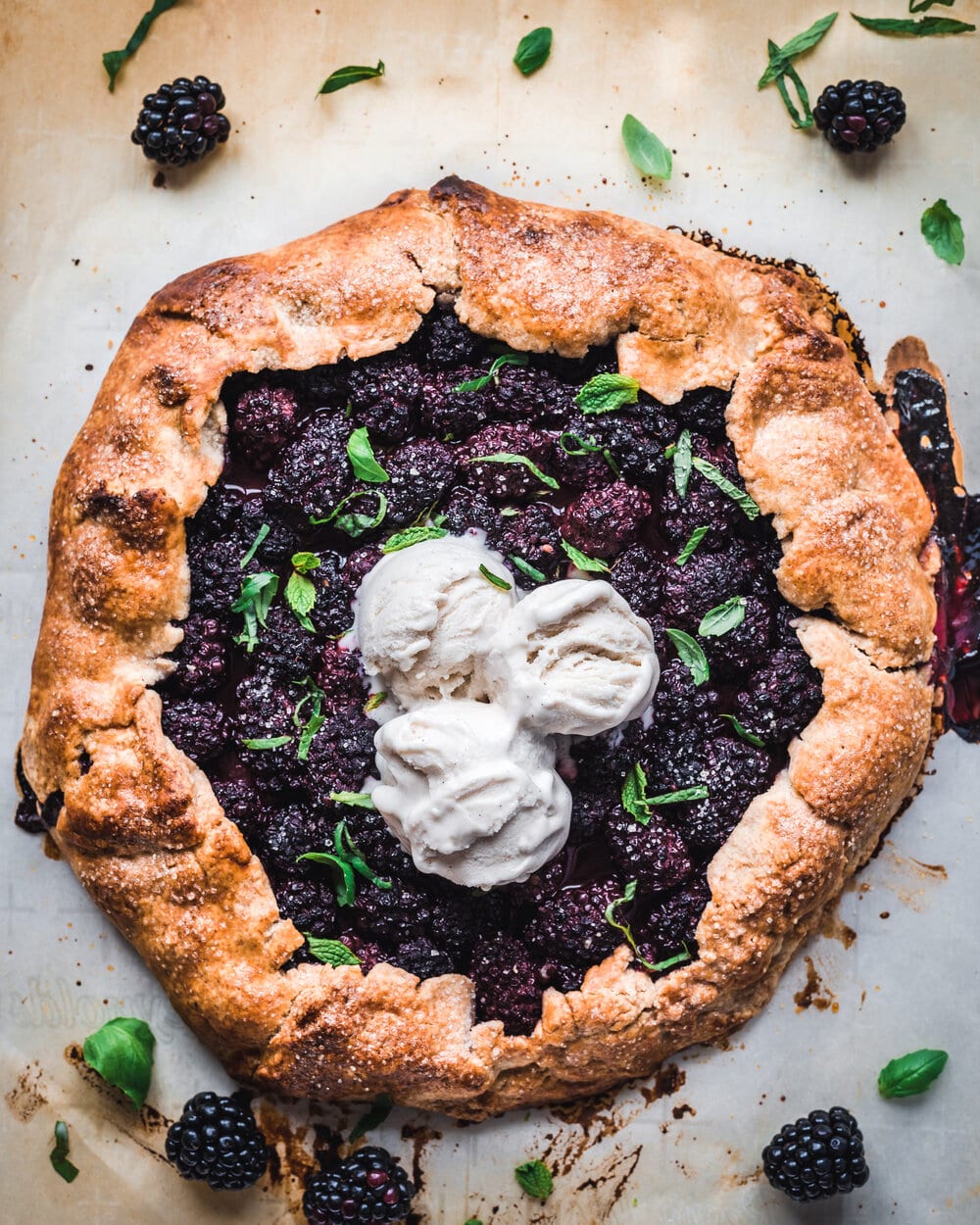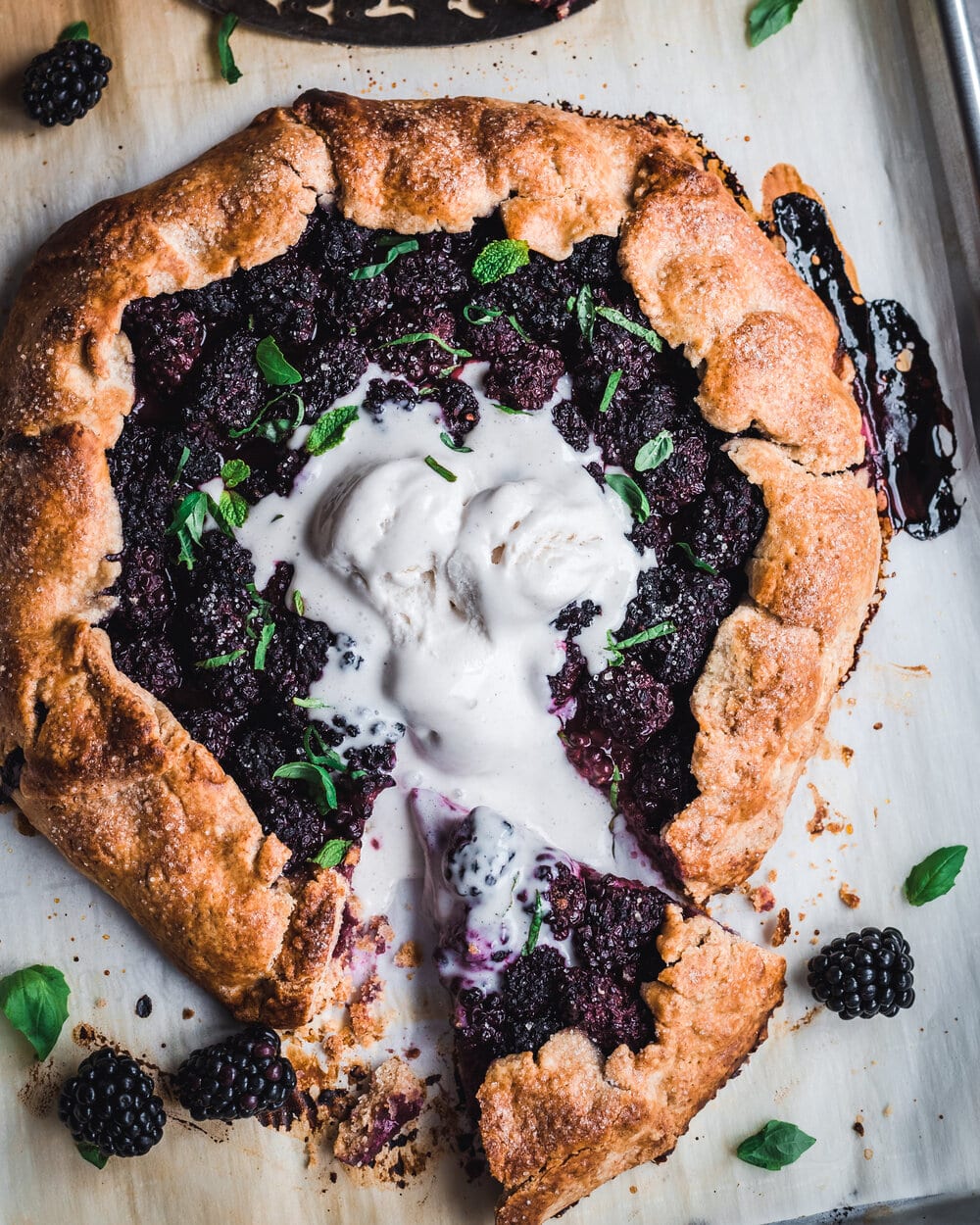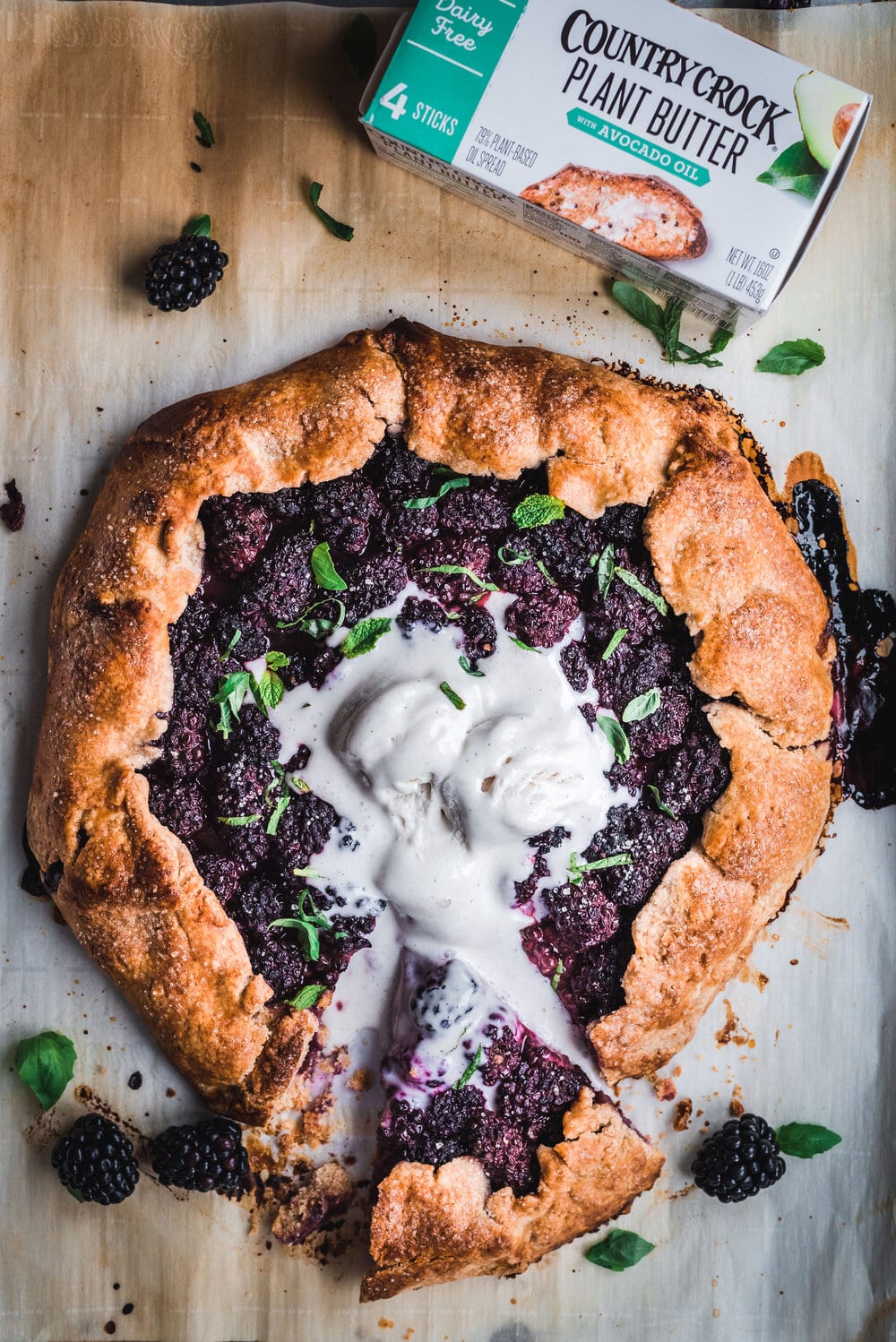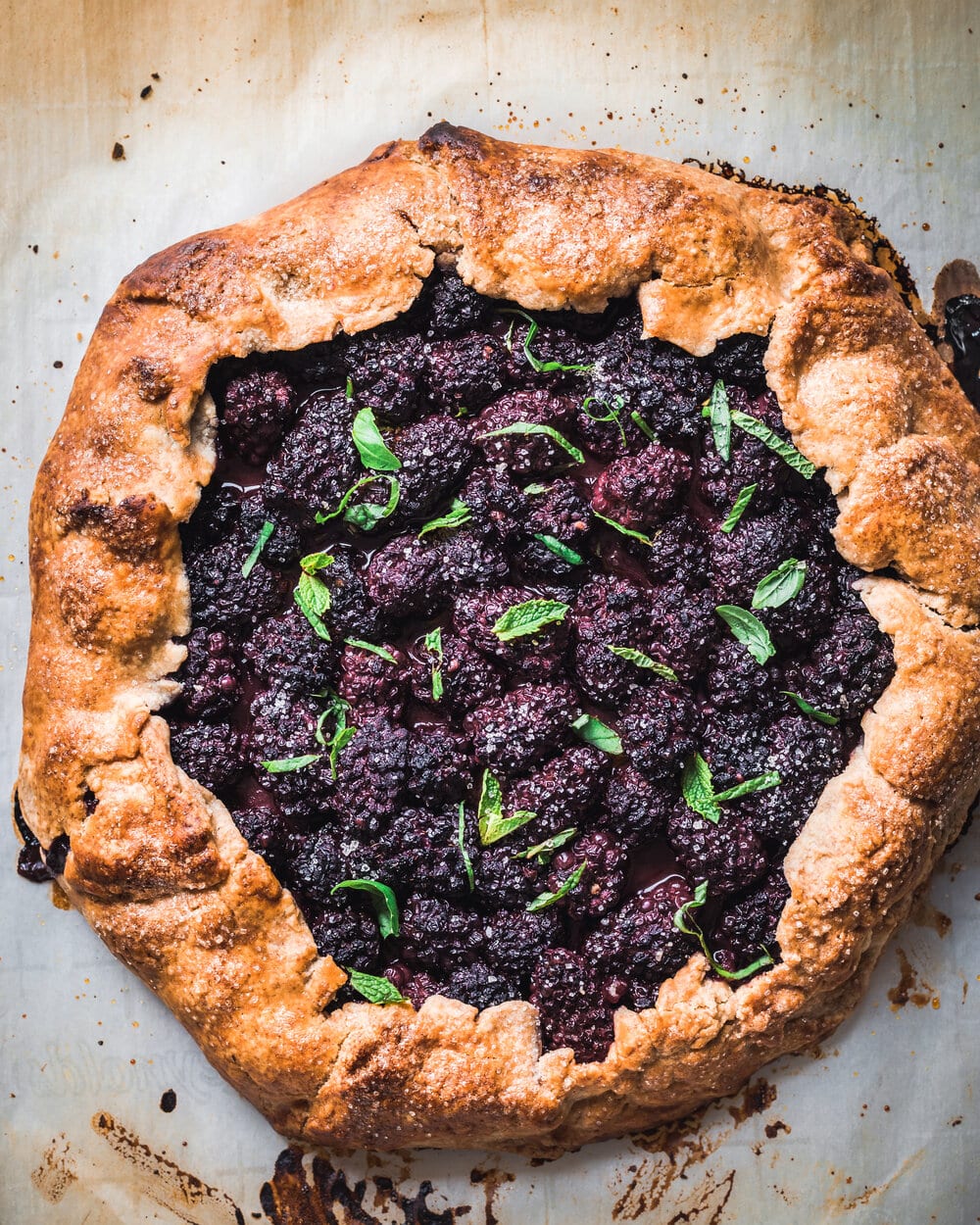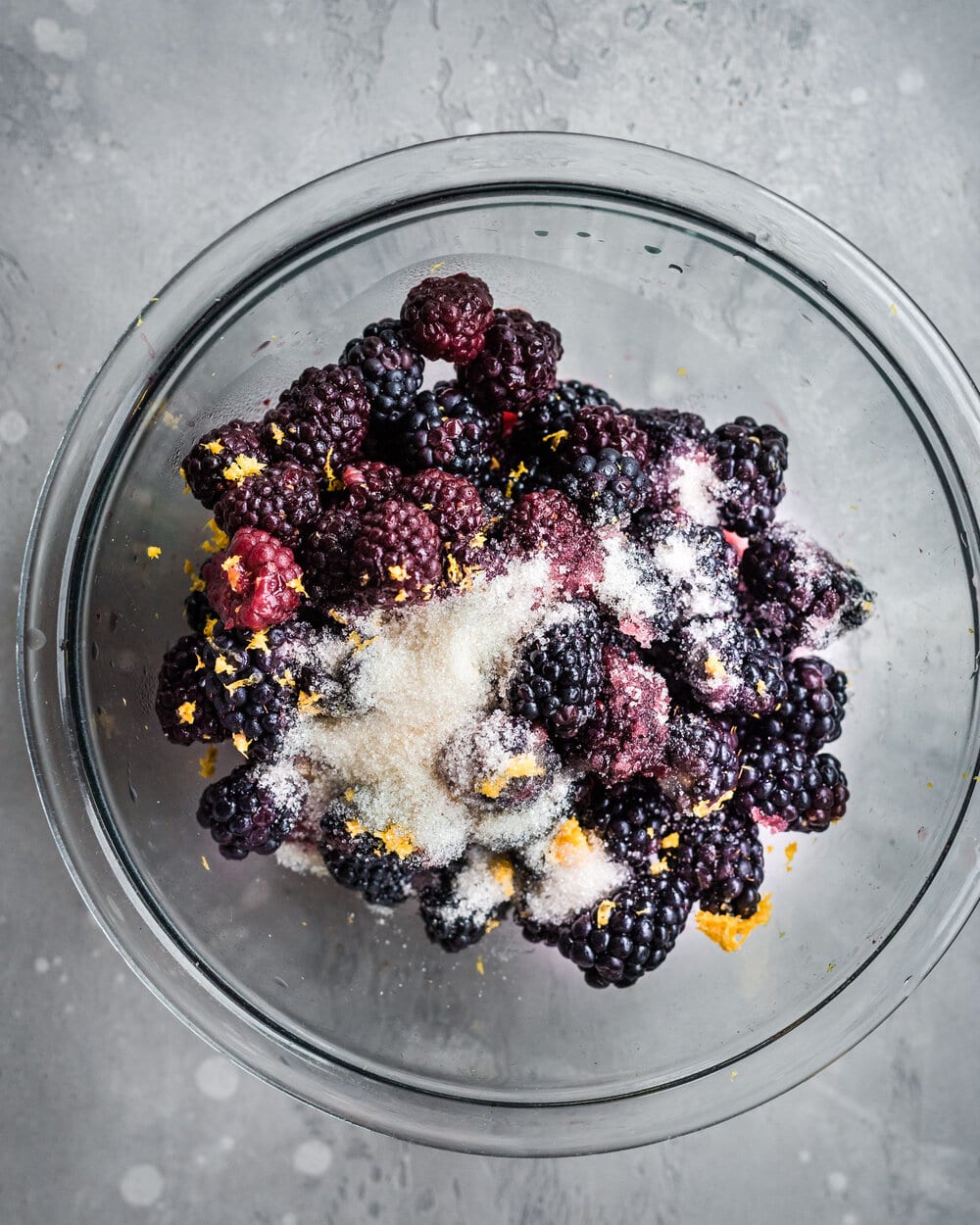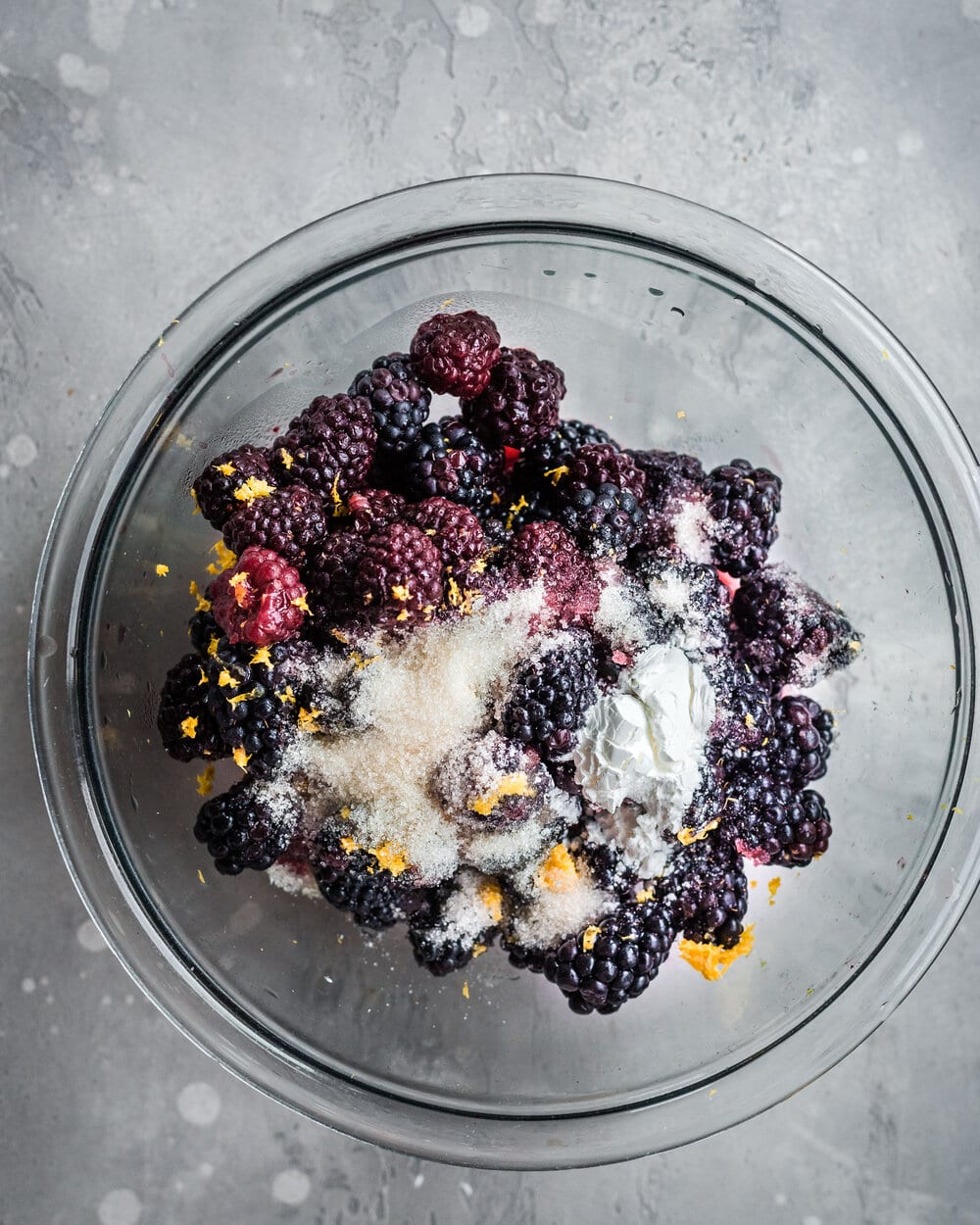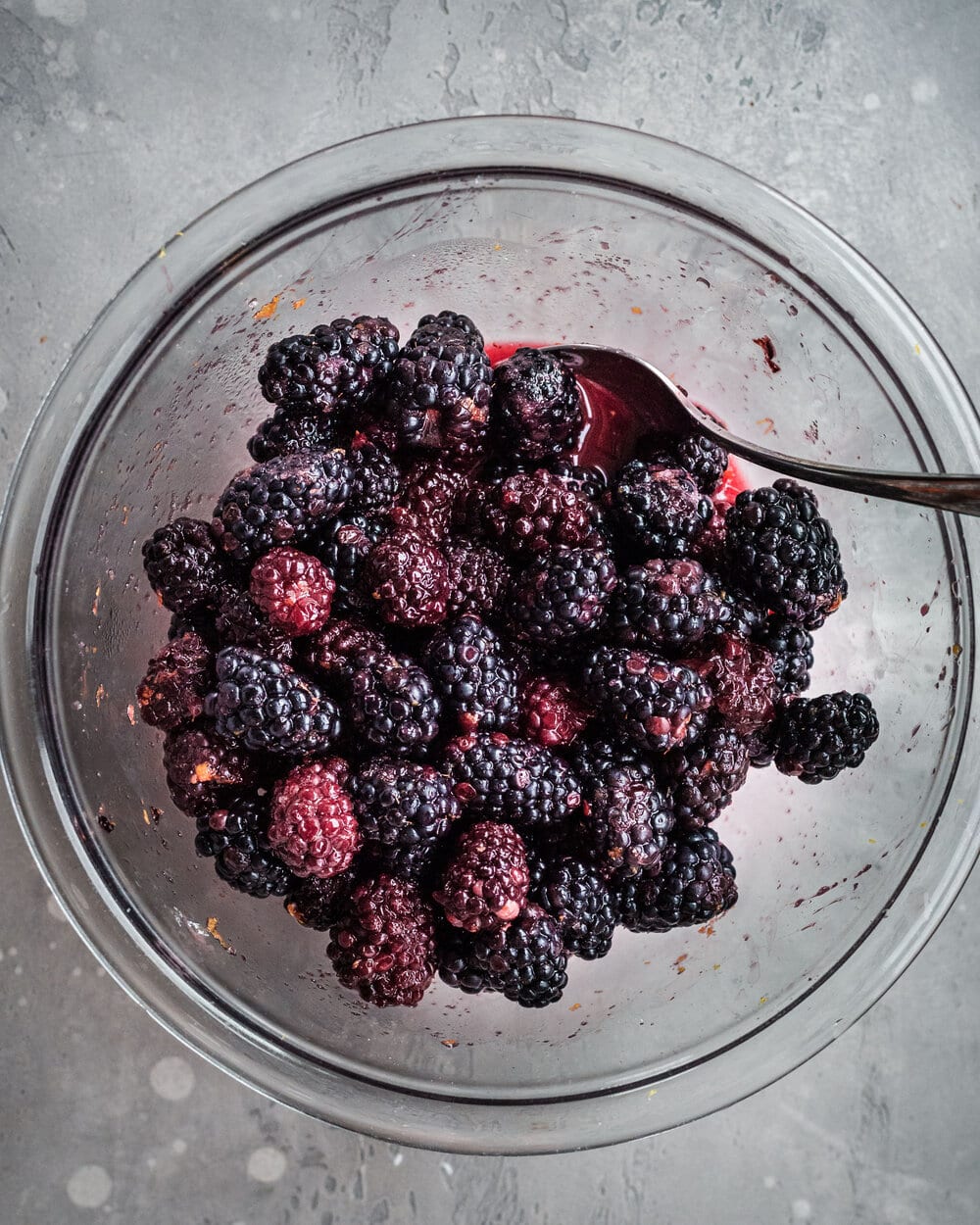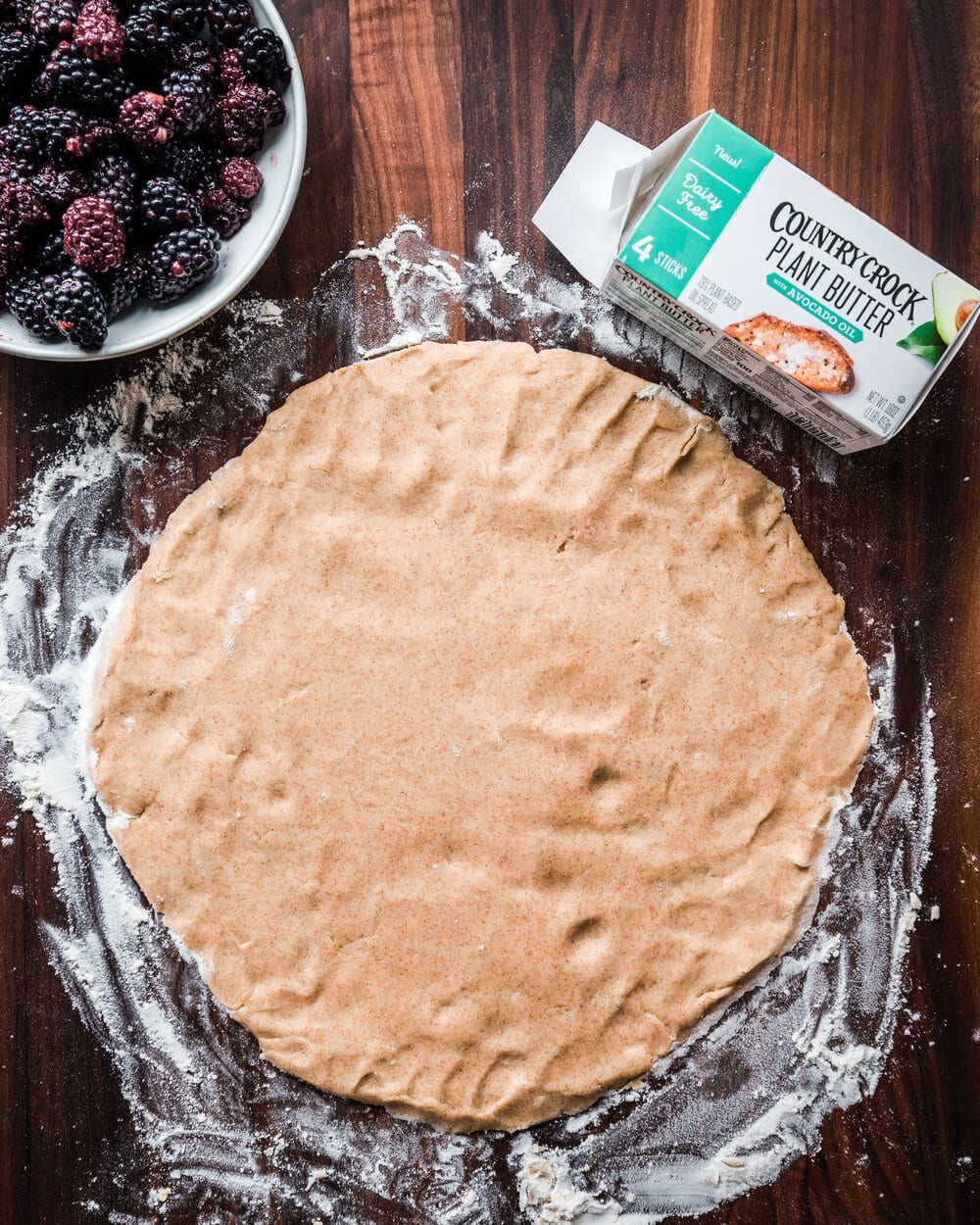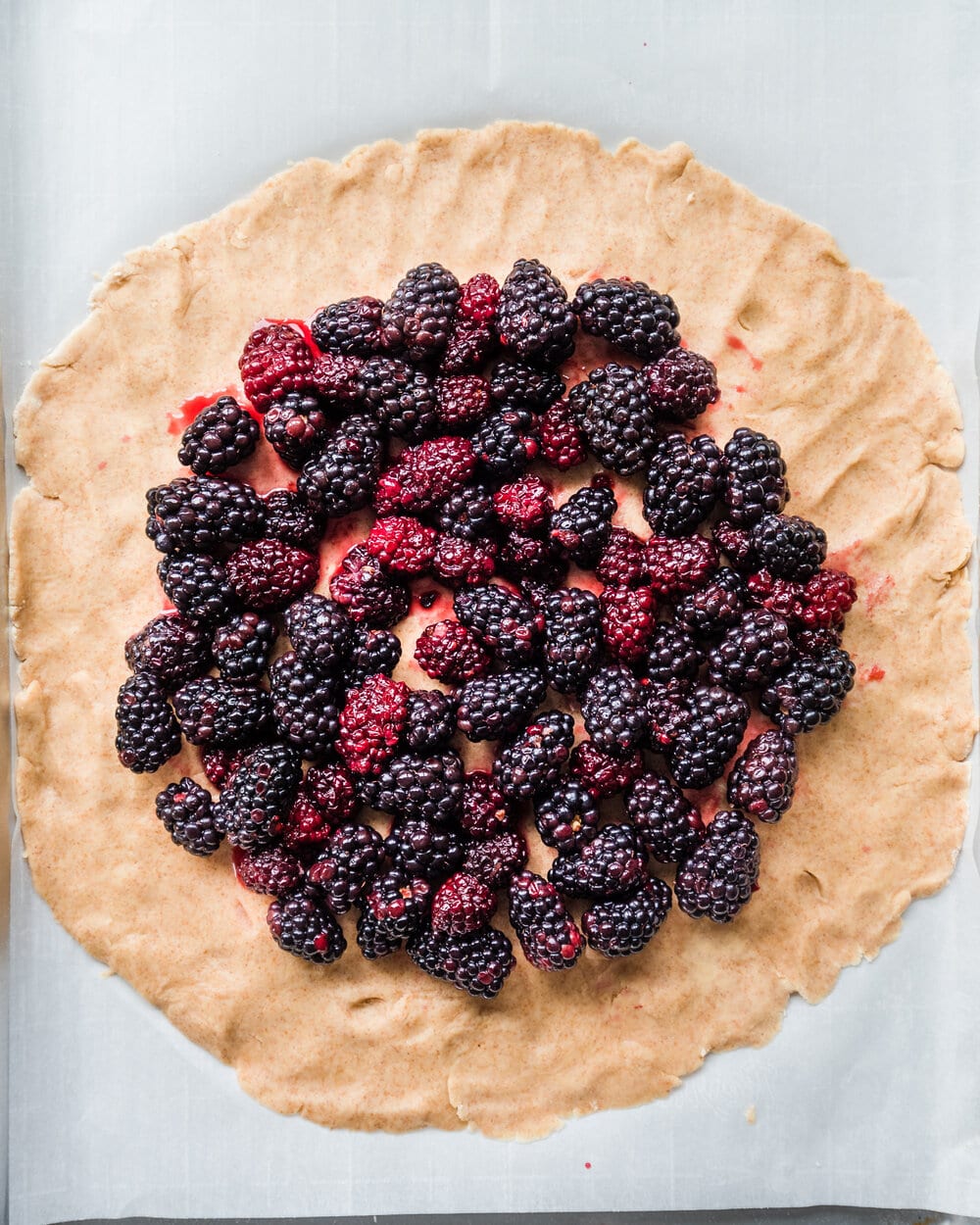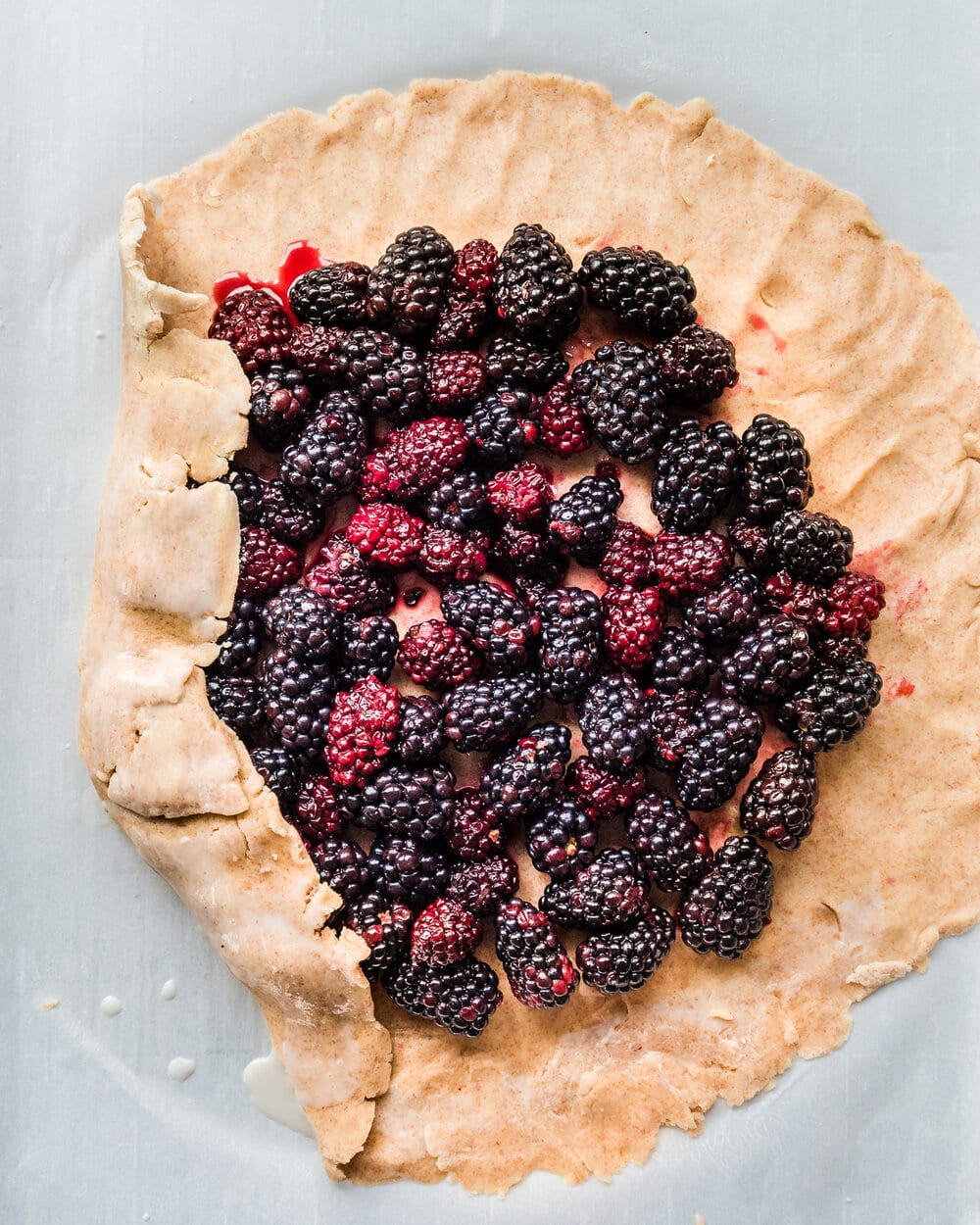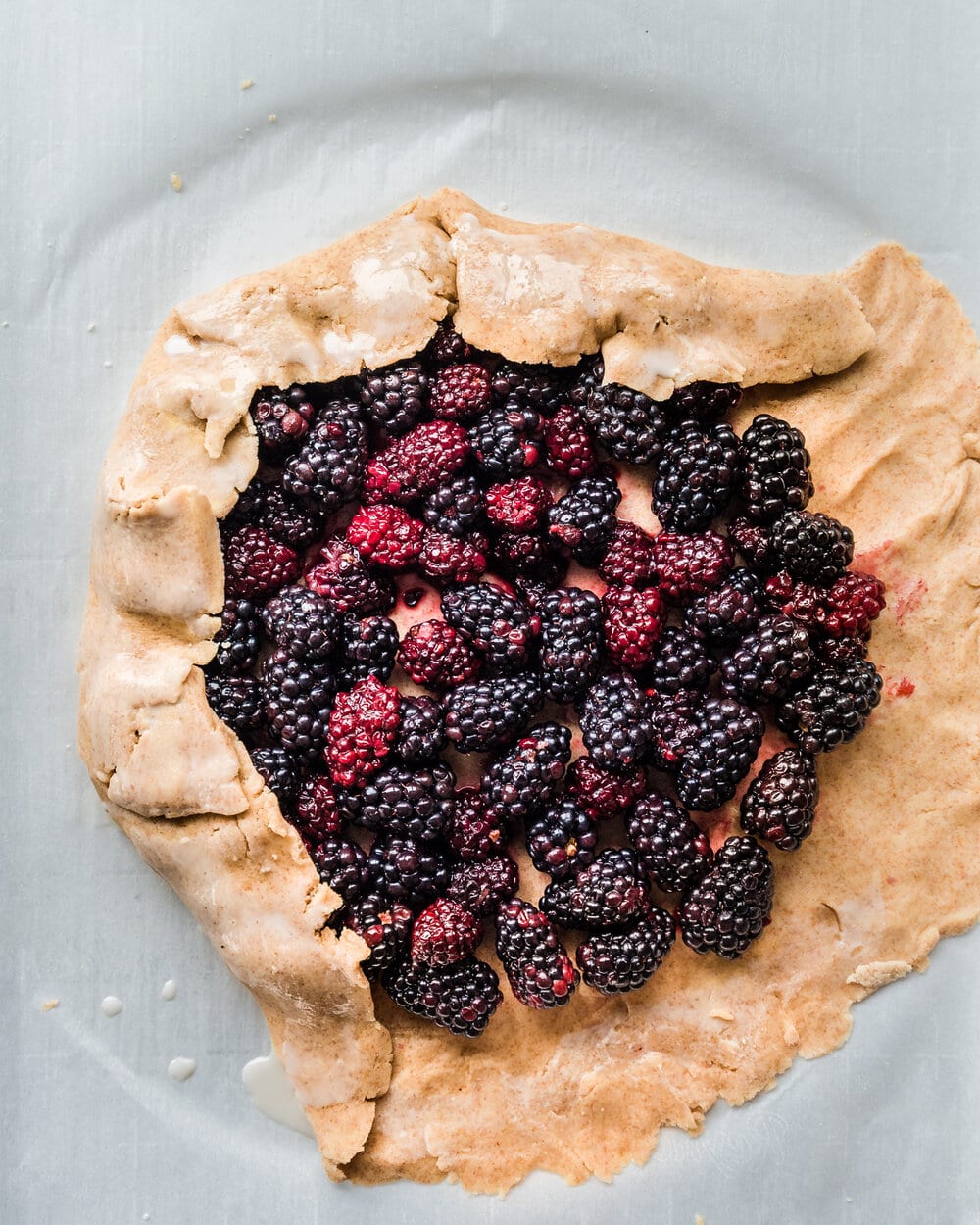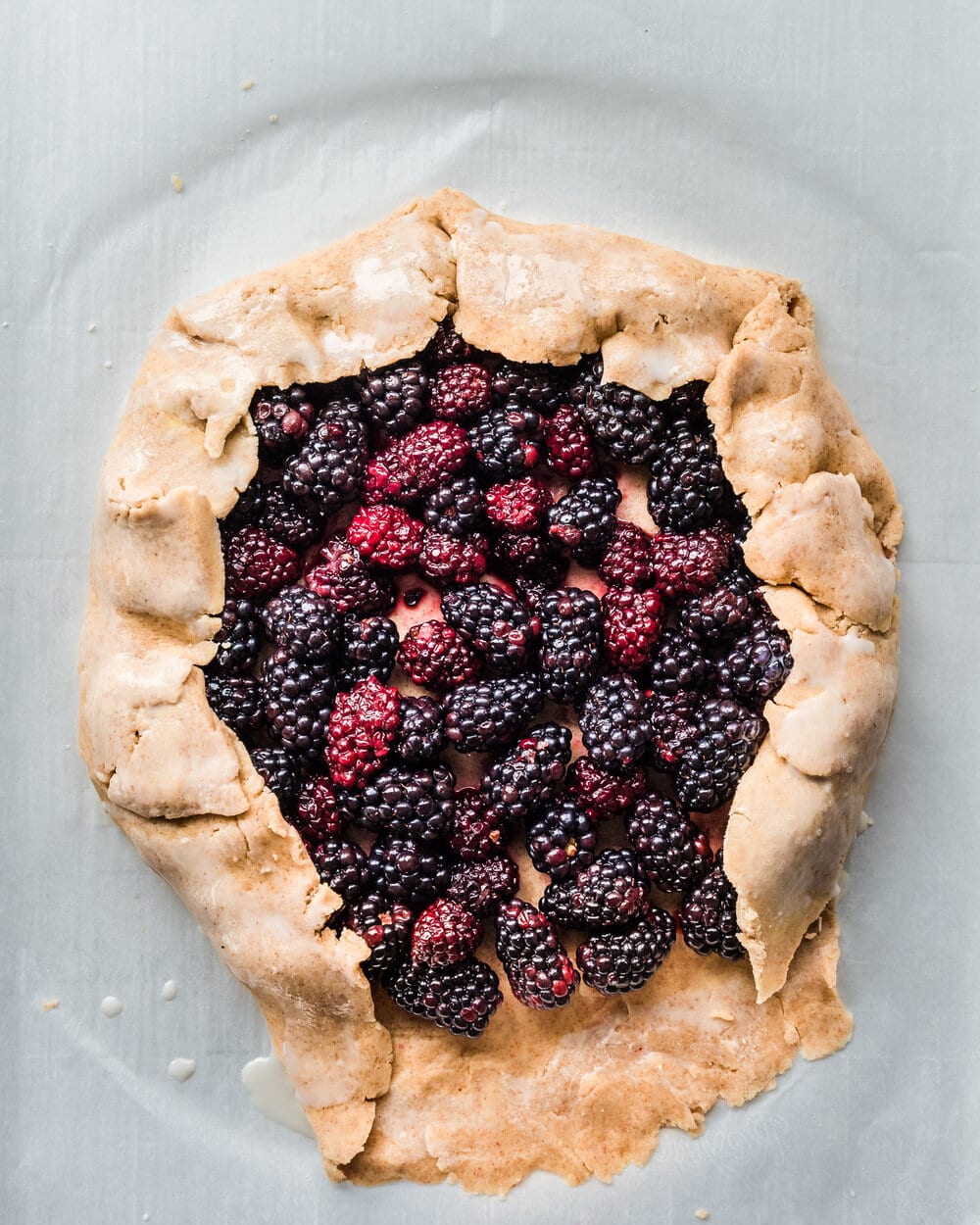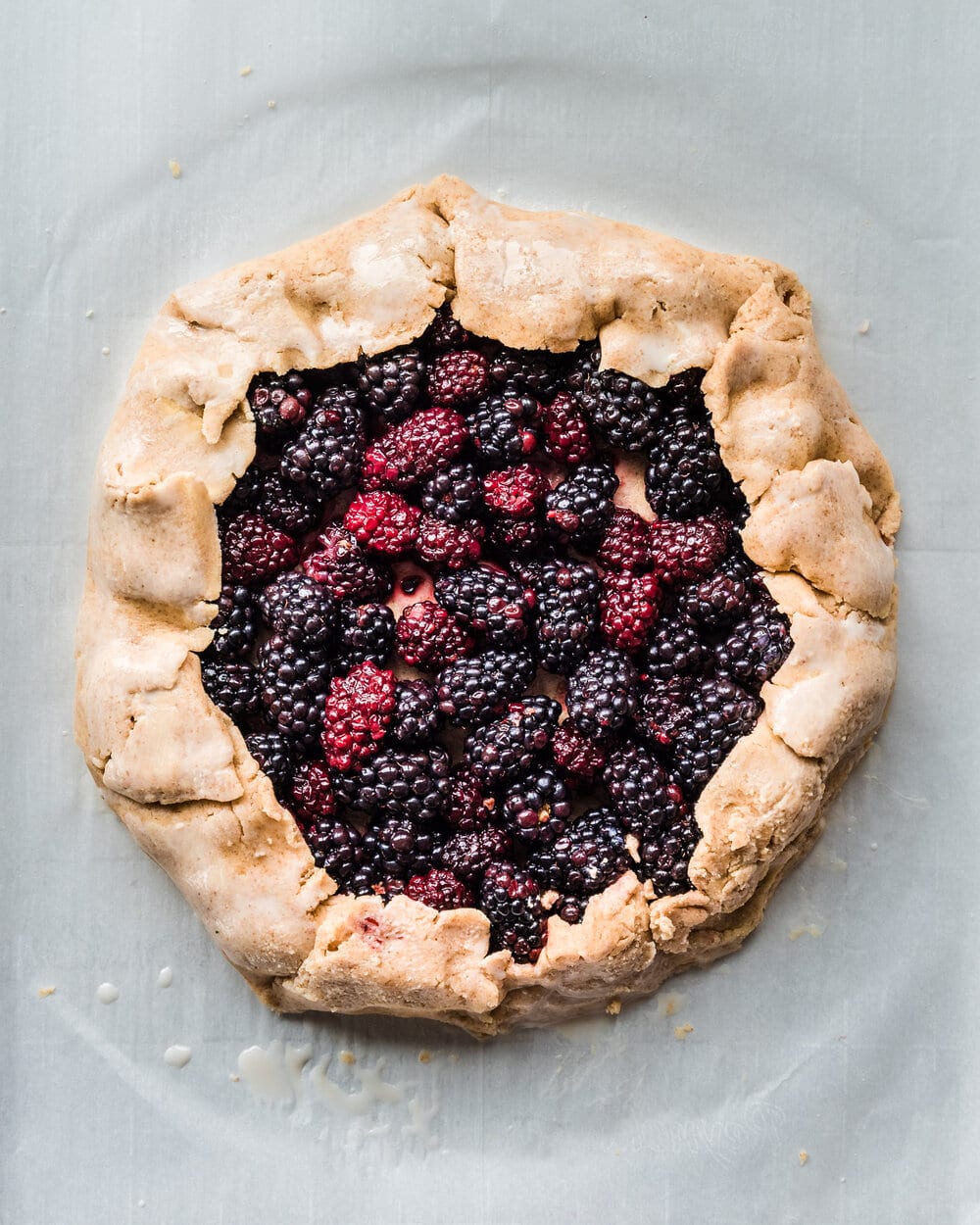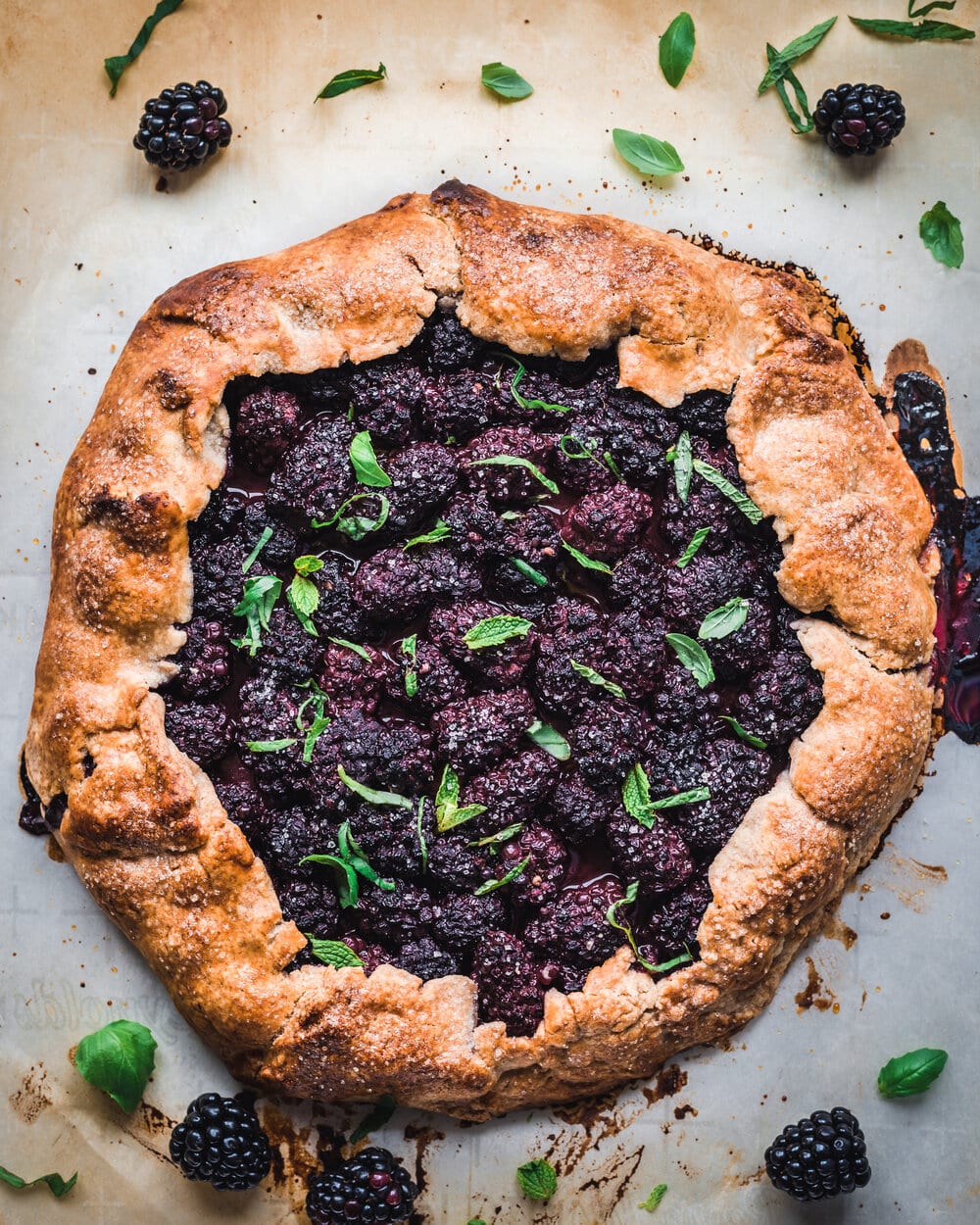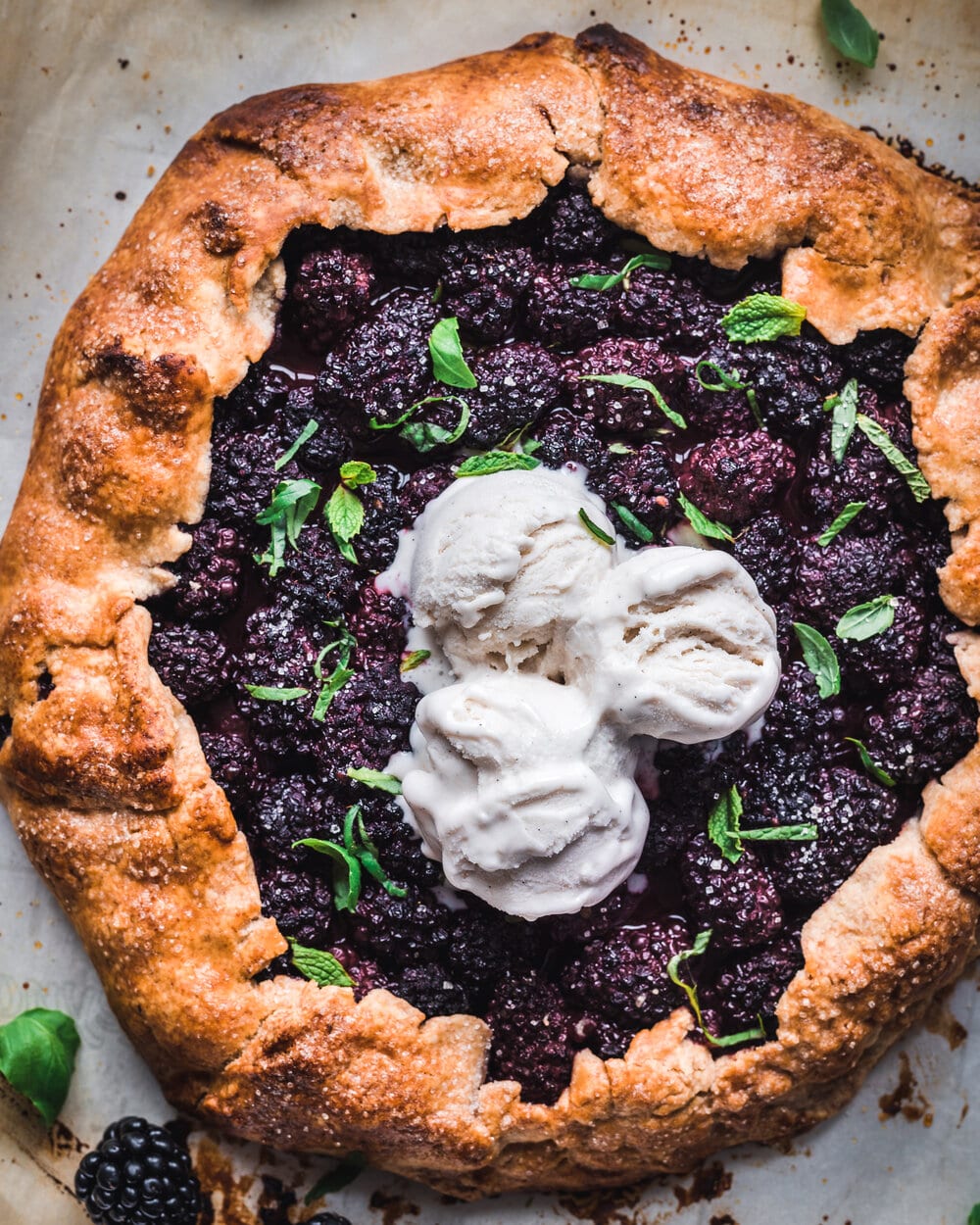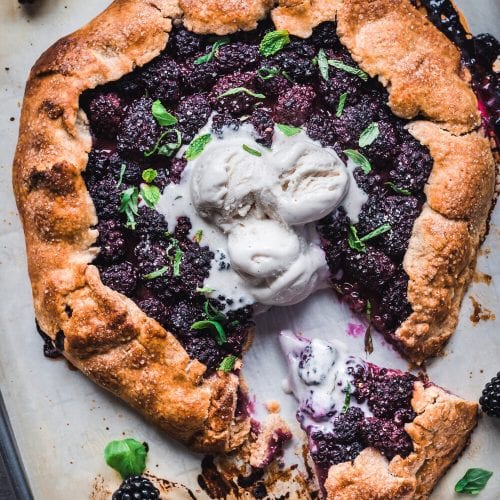Since I shared a Strawberries and Cream Cake and these Brownies recently, I figured it’s time to share a blackberry dessert like this Vegan Blackberry Galette. It’s an easy and rustic yet impressive dessert that’s perfect for summertime and a great way to enjoy berry season. Table of contents:1. Why you’re going to like this recipe2. Galette crust ingredient notes3. How to make this recipe4. Tips for making this recipe5. Recipe card with notes
Why you’re going to like this recipe
9 main ingredients. Nothing fancy here! Easy to make. You don’t need to be an expert baker to bake a galette! It’s very free-form and doesn’t require any prior pie-baking experience. Rustic and imperfect. If making pie crust and perfect latticework stresses you out (it definitely stresses me out), then this galette is the dessert for you! It’s rustic, casual, and it’s quite easy to throw together. Best of all, it doesn’t have to look perfect and every single galette looks different and has its own character. Low-effort, high reward. This is a treat that’ll impress your family and friends, but as I mentioned, it’s a very easy and simple dessert to make!
Galette crust ingredient notes
Vegan Butter. With pie dough, when you want the lightest, flakiest texture and richest flavor, butter is the best option (as opposed to shortening or oil). In this galette, the vegan butter lends that rich buttery flavor you love in pie crusts and galettes, but without any of the dairy :) During baking, the vegan butter also aids in the browning process, bringing that perfectly golden brown color. It is important to use cold (vegan) butter. I like to cut my butter into cubes, then stick that back in the freezer to chill (it takes less time than the fridge). Take the Plant Butter out of the fridge/freezer only once you’re ready to add it to the flour mixture. Not any sooner! All-Purpose Flour. All purpose-flour makes the structure of most pie crusts, as well as galettes. It yields a tender, flaky crust and is my go-to for pie/galette dough. Spelt Flour. However, I wanted to make this galette a little more unique, so the recipe uses equal parts all-purpose flour and spelt flour. It makes this galette a little more wholesome, and the spelt flour brings a slightly nutty flavor. The spelt flour also gives the galette a bit more of a rustic feel, which is perfect because galettes are supposed to be rustic. If you don’t have spelt flour, you can simply replace it with more all-purpose flour. Ice Water. Ice water is often used in pie crust as well, so it’s a natural addition to this galette dough. Ice water (1) keeps the (vegan) butter cold so it doesn’t melt (melted butter = your crust won’t get flaky); and (2) sort of acts as a binder and helps the dough hold its shape when you roll it out. The precise amount of ice water needed will depend on a few factors, including if you use a combination of all-purpose flour and spelt flour (as in the recipe) or just all-purpose flour, as well as the temperature and quality of your vegan butter. I recommend keeping a bowl or glass of ice water handy so you can measure out a teaspoon at a time. Apple Cider Vinegar. I use a bit of apple cider vinegar in this galette dough because vinegar helps hydrate and tenderize the dough and can prevent the formation of too much gluten, which results in tough crusts. You could also use lemon juice. Granulated Sugar. The crust should not be sweet, but incorporating just a little sugar (2 tablespoons) makes for a flakier, more golden browned crust, as the sugar enhances the browning process during baking. Sea Salt. Absolutely essential in any pie or galette crust. No salt = cardboard crust.
How to make this recipe
Blackberry Filling
This blackberry filling is so incredibly easy to make! All you need are fresh or frozen blackberries, lemon zest and lemon juice, sugar, and cornstarch or arrowroot powder. The last ingredient helps the filling thicken ever so slightly and prevents the berries from becoming too watery while baking. Simply mix these ingredients together in a bowl until well combined. If the mixture sits for a bit, you’ll notice it’ll gather some juices. Do not include the juices when you spoon the filling – you don’t want to add too much moisture to the galette. I usually just pour the berry filling over a sieve. If you have a decent amount of berry liquid leftover, you can save it! Just heat it on the stove for a few minutes to thicken it up, whisking frequently (arrowroot powder thickens more quickly than cornstarch). Then, when the galette is done, you can spoon the glaze over the top. If you don’t have blackberries you could easily substitute with raspberries, chopped strawberries, or blueberries. If you are using frozen berries instead of fresh berries, I recommend rinsing them in water a few times, but no need to fully thaw or defrost them.
Vegan Galette Crust
I went over some important stuff about the ingredients that go into the dough in the “Galette crust ingredient notes“, so be sure to read that section first. Cold butter + water. First, cut your vegan butter into cubes, then stick that back in the freezer or fridge to get colder. Take it out of the freezer/fridge only once you’re ready to add it to the flour mixture. Meanwhile, mix some ice with water in a bowl or glass for your ice water mixture. Cut the vegan butter into the flour mixture. Once the cubed butter is cold, add it to your flour/salt/sugar mixture. I use a pastry cutter to cut the cold vegan butter into the flour until the butter is the size of peas. [If you don’t have a pastry cutter, you can (a) use a fork to mash the butter into the flour; (b) use 2 butter knives to mix the butter into the flour mixture until well combined; (c) use your hands – squeeze the ingredients between your fingers to break up the butter; it helps if you can keep your hands cold and work quickly to prevent the butter from melting; or (d) use a food processor to pulse until you have a nice, crumbly texture. I have not tried a crust recipe like this in a food processor though, so I can’t vouch for it.] Add ice water and vinegar. Start by adding 2 tablespoons of ice water with the apple cider vinegar and stir to combine. Add more of the ice water as needed, just a teaspoon at a time, until the dough comes together when you squeeze it and you can form a ball that doesn’t crumble when you pull it apart. The dough shouldn’t be wet or too sticky. Chill the dough. This is when you cover the dough or wrap it in plastic, and then refrigerate for at least 1 hour, or up to 48 hours (yay, for prepping in advance!). Roll out the dough. Once done chilling, remove the galette dough and let it sit at room temperature for 10-15 minutes to make it pliable enough to roll. You have two options for rolling out the dough — rolling it on a floured surface and transferring it to your pan using a rolling pin, or rolling the dough directly on a piece of parchment paper. Both methods are outlined in the directions. Add the filling. Spoon your blackberry filling into the center of the dough, but keep a border of 1 1/2 to 2 inches wide so you can fold the crust over. Fold the dough. Fold the empty edges of the dough up over the blackberry filling to form a crust, ensuring the fruit gets tucked into the dough. Finish the dough. Brush the crust with a little plant-based milk, then sprinkle with some granulated or cane sugar. This is similar to brushing a pie crust with an egg white wash.
Tips for making this recipe
Keep everything cold. Keeping the (vegan) butter as cold as you can is important for a good flaky crust. If the butter is too warm it will make it hard to work the dough and the crust will be tougher than flaky. First step – cool down your kitchen. If it’s summertime, turn on the AC. Next, cube your Plant Butter and put it back in the freezer or fridge to chill. After that, make your flour mixture, followed by the ice water. If you have the space in your freezer or fridge, even chill the mixing bowl that you’ll make the dough in. Along with your pastry cutter or tool of choice. Only once you’ve mixed your flour mixture and made your ice water, remove the Plant Butter from the freezer/fridge. If your doughs feel warm after you roll out the galette, make space to chill it in in your freezer/fridge until cool to the touch before baking. No rolling pin? Use a wine bottle. It works quite similarly to a rolling pin. And if your wine bottle is chilled, even better because you want to keep the dough cool while rolling so. Adjust the sugar amount. The recipe includes a range for sugar in the blackberry filling. The amount you choose should depend on (a) how sweet your berries are, and (b) how sweet you’d like this galette to be. If you’re planning to serve this with vegan ice cream, go with the lower range of sugar. If you are planning to serve this plain or with unsweetened or lightly sweetened coconut whipped cream, you might want to use the higher range of sugar. Don’t skip the mint and basil. These herbs are optional (and you could use just one or the other instead of both), but I think they add an unexpected but welcome fresh pop to this galette. If you give this Vegan Blackberry Galette recipe a try, be sure to tag me on Instagram with your recreations and please comment with your feedback below!
Big Vegan Flavor
Techniques and 150 recipes to master vegan cooking.
